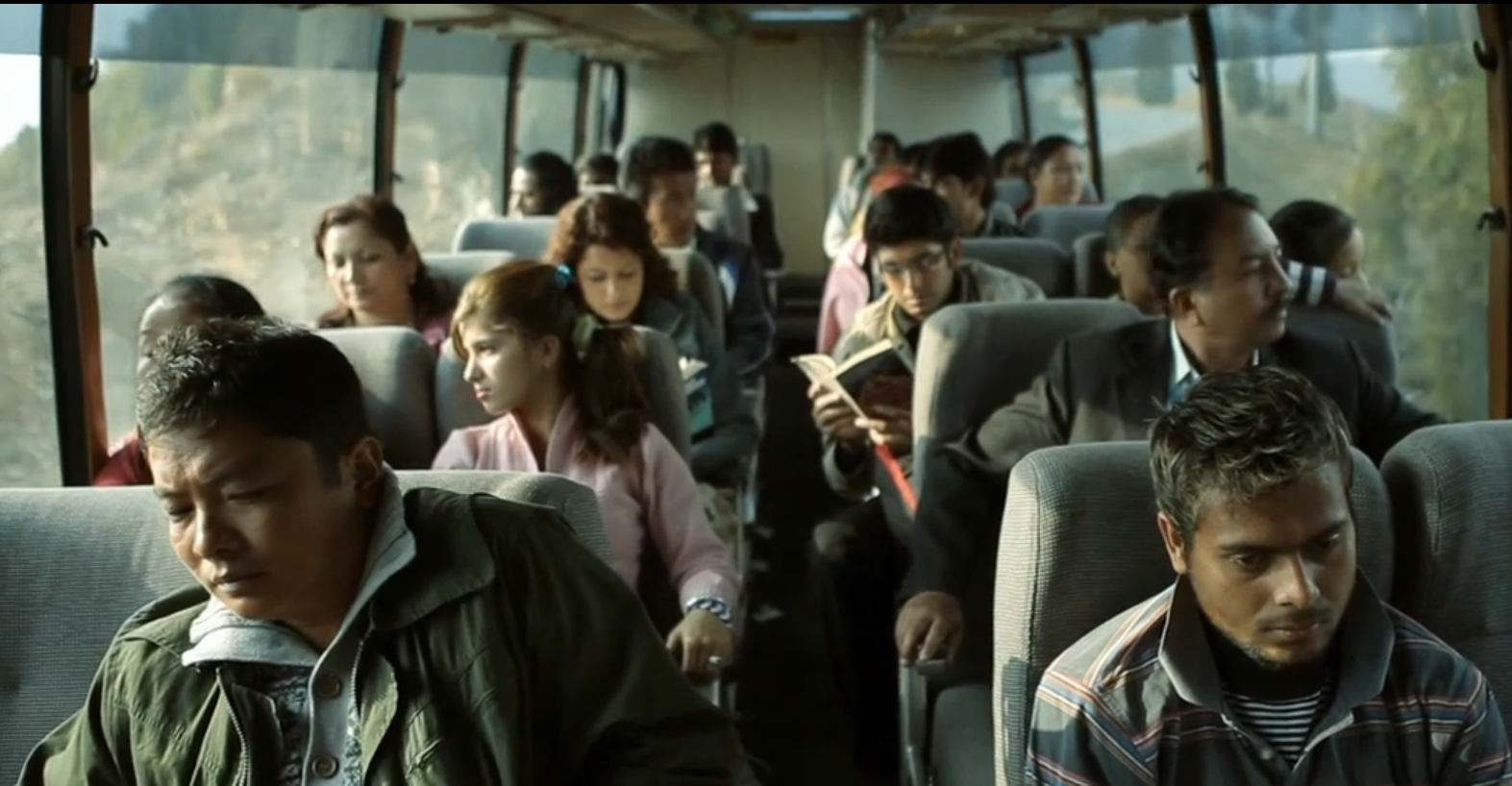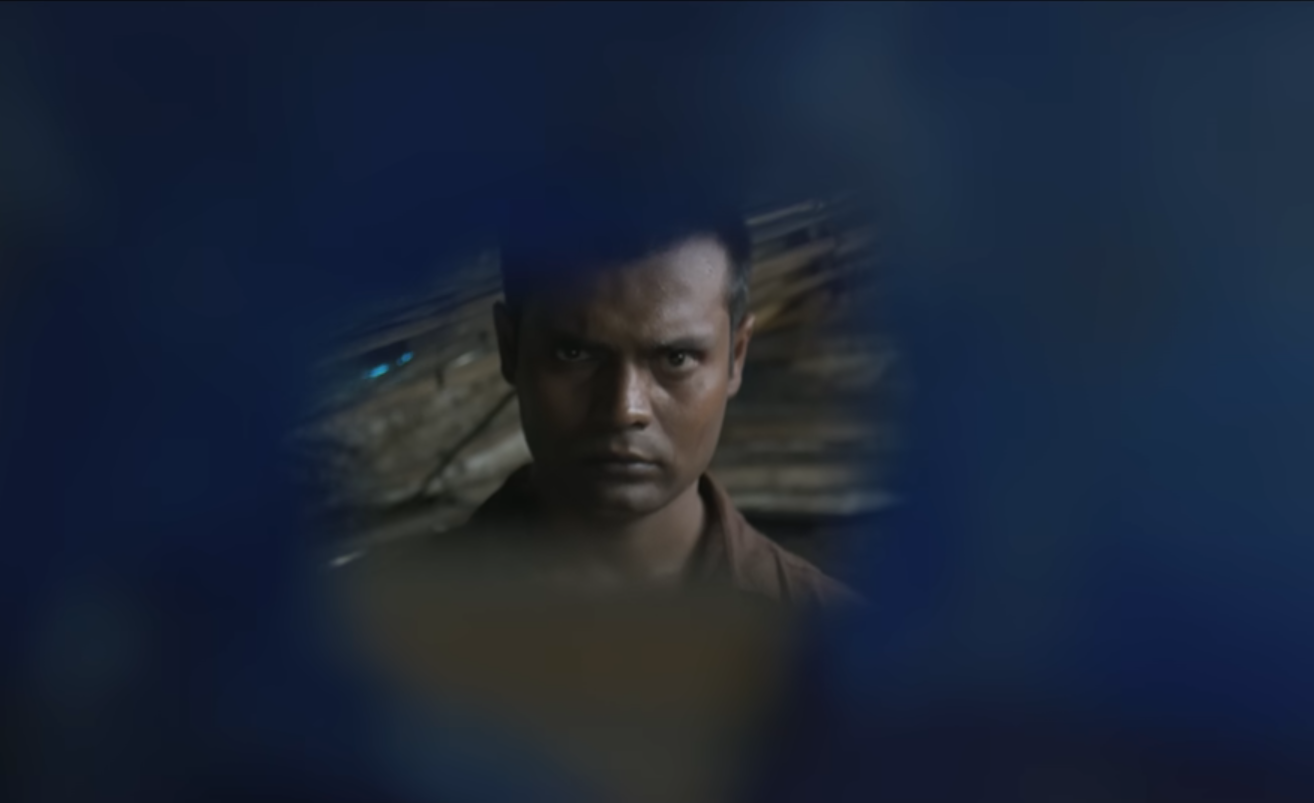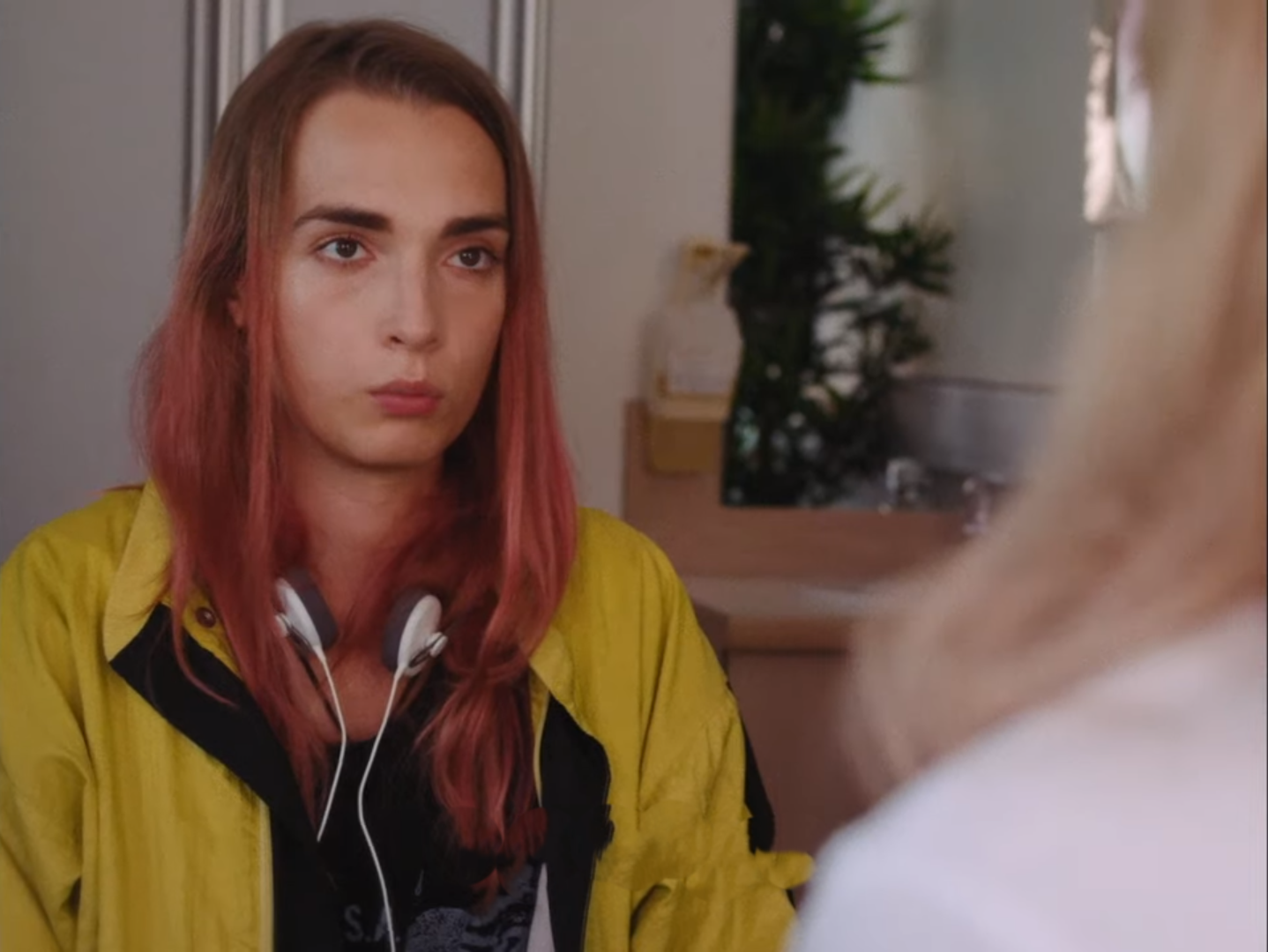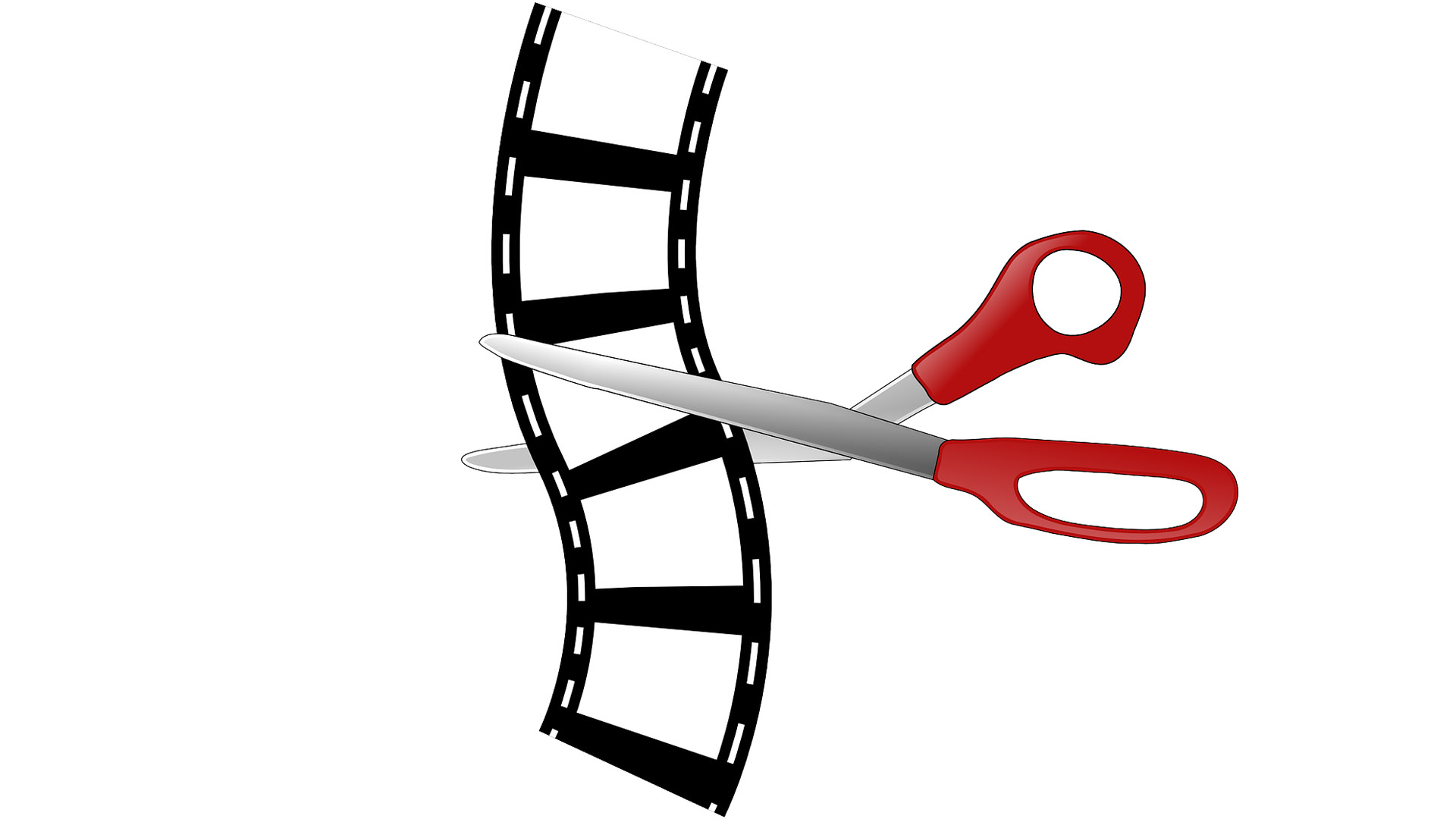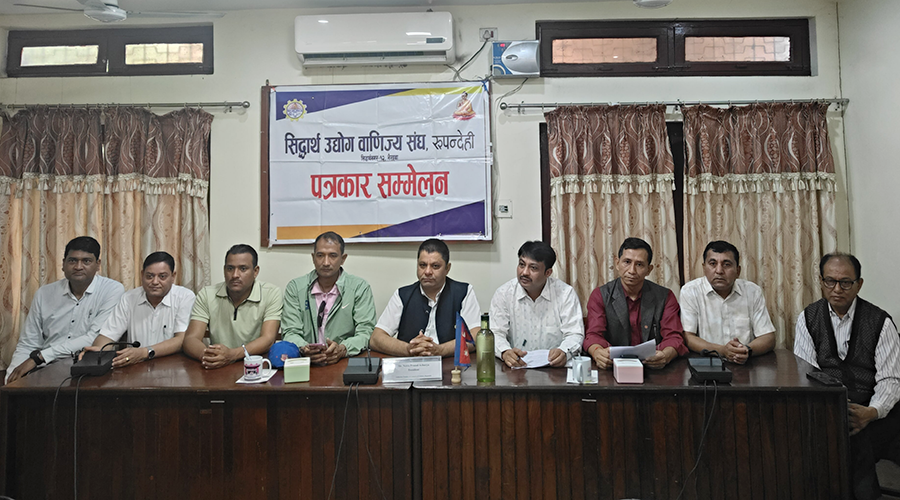
Regular moviegoers, except those who have been minutely keeping an eye on minor characters, would not recognise the lead actors of this week’s release, Jay Shree Daam. Yet, their acting will not disappoint you. It is the overdramatic plot, with its unnecessarily twists, that makes the movie look like an impoverished labyrinth.
Hence, you come out of the theatre with an ambivalent feeling—you are impressed with the cast’s acting, but the story disappoints.
Commendable acting
Amrit Dhungana, Binod Neupane and Jebicca Karki are little-known faces in the Nepali cinema industry. However, the three of them leave an impression. Among them, Dhungana is ahead of the pack. The young man’s dialogue delivery and body language look innocent, real-life and natural. Neupane, as Dhungana’s partner, complements the lead well as his facial expression reflects both innocence and cleverness, the fundamental characteristics of his role. Karki appears on the screen fewer times than Dhungana and Neupane, but she also appears to be a trained artist.
Rajan Khatiwada, who has already proved his skills in the country’s theatre industry as a director, does a commendable job in his role as the villain. Pramod Agrahari wears a ‘diplomatic’ police official’s look.
Biplob Upreti’s direction skills have worked well, especially considering that this is his debut movie. He has been prudent enough in the selection of the cast. Likewise, he has freed himself from the tradition of inserting a couple of songs, regardless of the flow of the story. The movie does not have a single ‘song’.
Likewise, there aren’t any ‘fight stunts’, though the characters wield pistols occasionally. If there had been a long fight sequence in such an ‘invented’ story, it could have further bored the audience.
From creative beginning to a faltered end
The movie does not begin with commonly used wide shots to establish the location of the story. It starts with a television interview, in which a police officer is quizzed over a recent murder case in the country’s capital. Suddenly, the movie takes the audience to a mismanaged bedroom where the protagonist has just awoken, disturbed by the TV noise and a knock on his door.

The way the film begins makes the audience curious–we want to know the link between the murder case and the man on the screen. The first half of the movie is capable of keeping the audience hooked—almost every scene presents the audience members with crucial information about the story; almost every character gives a new direction to the plot. The flow is uninterrupted. As said, there is neither a ‘fight’, nor a ‘song’.
The movement, however, falters in the second half. Apparently, the two scriptwriters have overlooked the natural flow of events in their attempt to insert dramatic scenes between them. Jeevan (Neupane) is made to uncover his mask by Babaji (Khatiwada) though it looks forceful and unnatural. Interestingly but cheaply, the protagonist (Dhungana) is made to run to the toilet at crucial moments–just to make sure that he misses some fantastic opportunities that could save him from possible ordeals.
Likewise, there are some gaps. The audience is not told anything about the deal Jeevan made with the police to free himself. While some of these scenes make the story complicated and confusing, they all add to the boredom. Though the concluding twist looks creative, the second half, overall, is constructed without proper attention to details of story writing and cinematography. Overdramatisation has killed the beauty of smoothness.
In addition, the story fails to free itself from the stereotypical and unrealistic portrayal of Nepal Police as a bunch of corrupt, cunning and incapable officials. Similarly, the movie’s portrayal of television journalists is also biased, faulty and unrealistic. They have been projected as irritating questioners concerned with superficial details of sensational events.
https://www.youtube.com/watch?v=gPsqv-EN8Ys
Equally stereotypical is the portrayal of the rural ‘loan shark’ and his armed assistants. Honestly, such practice exists seldom in Nepal these days.
Average cinematography
Cinematographically, Jay Shree Daam is an average production. There are not any apparent errors in camerawork, sound syncronisation and editing. Scenes in the retrospect are shown in black and white so as to avoid any likely confusion. People are shown defecating and urinating, yet the scenes do not look dirty owing to right camera angle and framing. The movie appropriately plays TV news and other noises in the background while characters talk in some scenes.
Verdict
Go watch the movie. It’s fun. There is no harm in appreciating the efforts of a debutante director and little-known artists. But, don’t expect anything more than this.
—
Jay Shree Dam
Genre: Comedy
Runtime: 100 minutes
Screenwriters: Biplob Upreti and Amar Deep Sakota
Director: Biplob Upreti
Cast: Amrit Dhungana, Binod Neupane, Jebicca Karki, Rajan Khatiwada, Pramod Agrahari, Bishnu Sapkota
2/5






